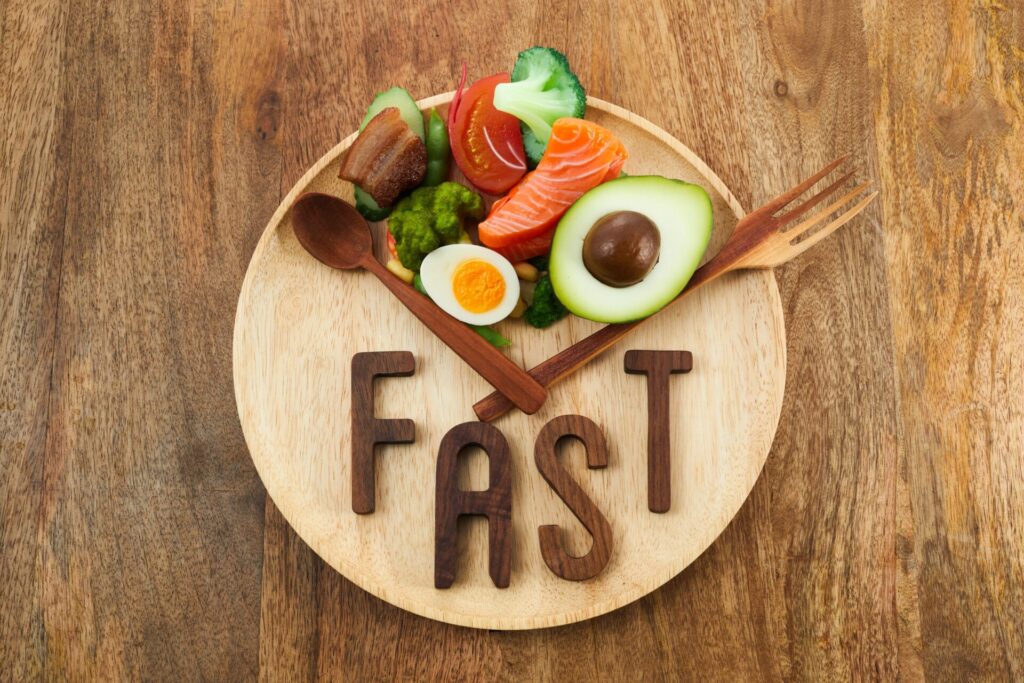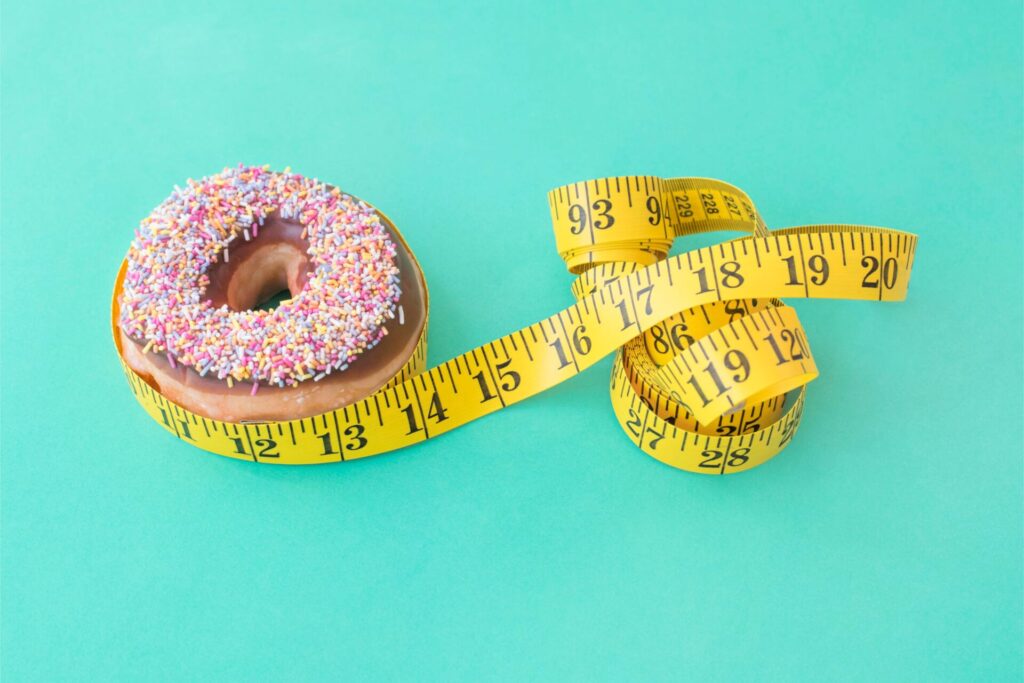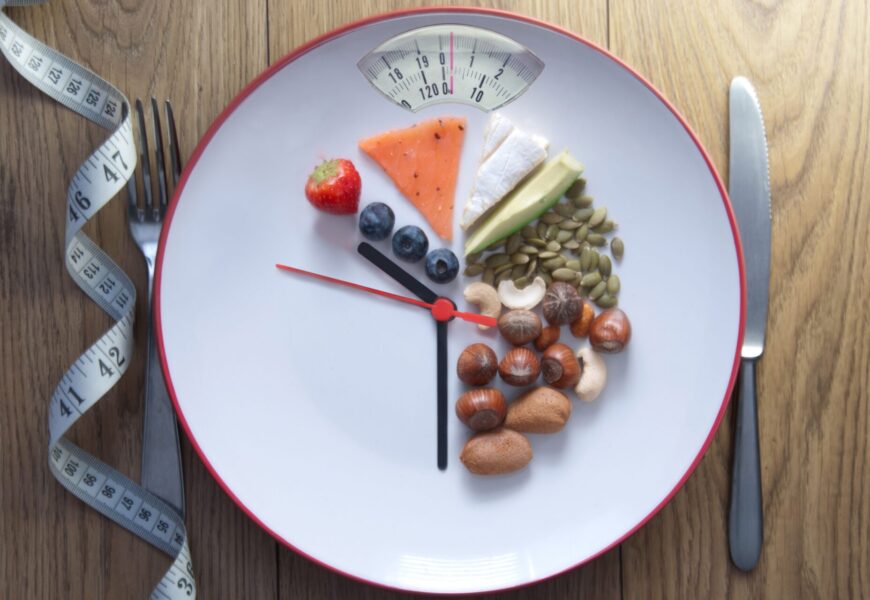In recent years, fasting has emerged as a popular dietary approach for improving health and managing weight.
Many people are intrigued by the idea of giving their bodies a break from constant eating, and two distinct fasting methods have taken the spotlight: Dirty Fasting and Clean Fasting. But what exactly do these terms mean, and how do they differ?
In this blog post, we aim to shed light on the nuances of Dirty Fasting versus Clean Fasting, helping you unravel the mystery behind these fasting strategies without diving into overly scientific jargon.
Understanding the fundamental distinctions between these two approaches is essential, as it can significantly impact your fasting experience and ultimately determine which one might be better suited for your individual goals and lifestyle.
So, whether you’re a fasting novice or seeking to fine-tune your fasting routine, this guide will serve as your compass in navigating the world of fasting, helping you decide which path aligns best with your unique needs and preferences.
What Is Clean Fasting?

Clean fasting is like the gold standard of fasting, where you go all-in by saying a big ‘no’ to anything with calories during your fasting hours.
It’s like giving your body a VIP pass to autophagy, a natural cleaning process that helps keep your cells in tip-top shape.
Now, this might sound like a superhero move for some, but it’s not everyone’s cup of tea.
It can be a bit tough for those who need a bit more flexibility or find it hard to resist the occasional snack during fasting.
If you’re the type who loves a challenge, wants to maximize the health perks of fasting, and is ready to stick to the rules without a calorie sneak peek, this fasting could be your go-to.
Just remember, it’s not a universal fix, and it might not suit everyone, especially if you have certain health conditions or find the strict guidelines a bit too much.
It’s always smart to chat with a healthcare pro before jumping into any fasting adventure.
Benefits Of Clean Fasting

Enhanced Autophagy and Cellular Repair
Clean fasting, distinguished by its strict adherence to abstaining from caloric intake, is renowned for unlocking the body’s natural ability to engage in enhanced autophagy and cellular repair processes.
Autophagy is like the body’s internal recycling system, where it clears out damaged or dysfunctional cells, making room for new, healthier ones.
This process becomes more potent during clean fasting as the absence of ingested calories prompts the body to prioritize these cleansing mechanisms.
It’s akin to a cellular reset button, promoting longevity and overall health by rejuvenating vital components within our cells.
This distinction between dirty fasting and clean fasting highlights the profound impact that the absence of caloric intake can have on cellular health.
Improved Insulin Sensitivity
One of the standout advantages of clean fasting, in the ongoing debate of clean fasting vs. dirty fasting, is the notable improvement in insulin sensitivity.
Insulin, a hormone crucial for regulating blood sugar, operates more efficiently when clean fasting is practiced.
This means the body becomes more responsive to insulin signals, facilitating better control over blood sugar levels.
The significance here extends beyond immediate metabolic effects, potentially reducing the risk of developing conditions like type 2 diabetes.
It emphasizes how the simplicity of clean fasting, characterized by its strict no-calorie stance, can yield profound benefits in terms of metabolic health, setting it apart from the more flexible approach of dirty fasting.
Greater Potential for Weight Loss
This fasting emerges as a formidable ally for those on a weight loss journey due to its inherent potential for creating a substantial calorie deficit.
The strict avoidance of caloric intake during fasting periods sets the stage for the body to tap into its energy reserves, primarily stored in the form of fat.
This metabolic shift becomes a key differentiator in the clean fasting vs. dirty fasting discourse, showcasing how the rigidity of this fasting can translate into more consistent and substantial weight loss outcomes.
While individual responses may vary, this fasting approach has been associated with a greater potential for shedding excess pounds and achieving sustainable weight management goals.
Clarity and Mental Focus
Clean fasting extends its benefits beyond the physical realm, with numerous practitioners reporting enhanced mental clarity and focus during fasting periods.
The absence of caloric intake seems to promote a state of mental sharpness, potentially attributed to the body’s shift towards utilizing ketones for energy, a byproduct of fat metabolism.
This mental acuity is often described as a sense of clarity, where cognitive function is optimized, allowing for improved concentration and productivity.
It’s a noteworthy aspect to consider when weighing the pros and cons of clean fasting vs. dirty fasting, emphasizing that the benefits of clean fasting extend beyond the physical, positively impacting cognitive performance and overall mental well-being.
Predictable Outcomes
In the exploration of clean fasting vs. dirty fasting, the predictability of outcomes stands out as a significant advantage of the clean fasting approach.
The strict guidelines of this fasting, marked by consistent fasting windows and the complete avoidance of caloric intake, contribute to more predictable and reliable results.
Whether it’s in terms of autophagy, weight management, or metabolic improvements, it tends to offer a more standardized response across individuals.
This predictability becomes a valuable factor for those seeking a structured and reliable approach to fasting, underscoring how the discipline of clean fasting can lead to more dependable and measurable health outcomes compared to the flexibility of dirty fasting.
Drawbacks Of Clean Fasting
Challenging Adherence
Embarking on the clean fasting journey can be like navigating uncharted waters, and sticking to the path of abstaining from any caloric intake demands a significant mental and physical commitment.
The rigid nature of this fasting approach, where even a small deviation can disrupt the fasting state, makes it challenging for individuals, especially those new to fasting or with busy lifestyles, to adhere consistently.
Unlike the more flexible approach of dirty fasting, the stringent rules of this fasting require a heightened level of discipline and may feel restrictive to those accustomed to more lenient dietary habits.
Potential for Low Energy Levels
Clean fasting, with its strict prohibition of caloric intake during fasting periods, might pose a potential challenge when it comes to sustaining energy levels.
Some individuals may experience periods of low energy, fatigue, or dizziness, especially during extended fasting periods.
While the long-term benefits, such as enhanced autophagy and improved insulin sensitivity, are touted, it’s crucial to acknowledge and manage the temporary dips in energy that can occur during the initial phases of this fasting approach.
Unlike dirty fasting, where limited caloric intake can provide a buffer, it demands the body to rely solely on stored energy, which may not always align with the immediate energy needs of every individual.
Less Dietary Variety
Clean fasting, with its emphasis on strict abstinence from caloric intake, may inadvertently lead to a reduction in dietary variety.
Unlike dirty fasting, which allows for a more diverse range of food choices during fasting periods, the limited options in this fasting approach may result in a less varied and potentially monotonous diet.
This reduced diversity could impact not only the sensory pleasure of eating but also the intake of a broad spectrum of nutrients essential for overall well-being.
It’s essential for individuals practicing this fasting approach to pay extra attention to meal planning to ensure they still achieve a balanced and nutritionally rich diet.
Social and Lifestyle Constraints
The commitment to this fasting may present challenges in social and lifestyle settings, where food often plays a central role.
Unlike the more adaptable nature of dirty fasting, which allows for some caloric flexibility, it can be less accommodating during social events, family gatherings, or travel.
Navigating social situations while adhering to the strict guidelines of this fasting approach may require additional planning and communication, potentially impacting the spontaneity of such occasions.
This aspect makes this fasting approach less seamlessly integrated into certain lifestyles and could pose a hurdle for those who value the communal and cultural aspects of shared meals.
Risk of Orthorexic Behavior
While the pursuit of this fasting aligns with health-conscious intentions, there exists a potential risk of developing orthorexia nervosa behavior—a fixation on adhering strictly to clean eating practices.
The rigid rules of this fasting, coupled with a societal emphasis on ‘clean’ or ‘pure’ eating, may inadvertently contribute to an unhealthy obsession with dietary perfection.
This obsessive focus on adhering to clean fasting guidelines might lead individuals down a path of anxiety and guilt surrounding food choices, detracting from the intended health benefits.
Balancing the pursuit of health with a realistic and flexible approach is crucial to avoid falling into the trap of orthorexia tendencies.
What Is Dirty Fasting?

Dirty Fasting is a somewhat flexible approach to fasting that allows for a limited caloric intake during the fasting period.
This means you can consume small amounts of certain foods or beverages that don’t significantly spike your insulin levels.
Unlike clean fasting, where only water, tea, or black coffee are allowed during fasting hours, it permits a bit more leeway.
It’s essential to be mindful of what you consume during fasting to avoid overdoing it on calories, which could negate the benefits of fasting.
Additionally, it may not trigger the same level of autophagy and cellular cleansing as clean fasting due to the small caloric intake.
Therefore, it’s important to weigh the pros and cons carefully and consider whether this approach aligns with your goals and lifestyle.
Benefits of Dirty Fasting

Flexibility in Food Choices
It provides a bit more wiggle room in what you can eat during your fasting periods.
Unlike clean fasting, which requires total abstinence from calories, it allows for a small intake of calories.
This flexibility can make the fasting experience less rigid and more adaptable to individual preferences.
You don’t have to stick to a specific set of foods, giving you the freedom to include a variety of options in your diet.
This adaptability can be particularly appealing to those who find it challenging to adhere to strict dietary rules, making it a more sustainable and enjoyable approach for many individuals.
Sustainable Adherence
One of the key advantages of this fasting approach is its sustainable adherence over the long haul.
The flexibility in allowing some caloric intake makes it more feasible for people to stick with the fasting routine.
Clean fasting, with its strict no-calorie policy, can be mentally and physically demanding, potentially leading to burnout or abandonment of the practice.
On the other hand, it provides a middle ground, allowing for a sustainable and realistic approach to fasting.
This adaptability in adherence can be especially beneficial for those who are new to fasting or find it challenging to commit to a more stringent clean fasting routine.
Potential for Better Energy Levels
It introduces the potential for better energy levels during fasting periods compared to clean fasting.
Allowing for a small intake of calories provides a source of energy that can help combat fatigue and prevent the dip in energy levels that some individuals experience during clean fasting.
This aspect is crucial for those with active lifestyles or demanding daily routines.
By incorporating a modest amount of calories, it offers a compromise between the benefits of fasting and the need for sustained energy, making it a favorable choice for individuals who prioritize maintaining their activity levels while fasting.
Reduced Risk Of Nutrient Deficiency
A notable advantage of dirty fasting is its reduced risk of nutrient deficiency compared to clean fasting.
While clean fasting strictly prohibits caloric intake, it permits a limited intake of essential nutrients, including vitamins and minerals.
This allowance can help mitigate the risk of nutritional deficiencies that might arise from extended periods without any caloric intake.
This aspect is particularly relevant for individuals who are concerned about maintaining a balanced and nutritionally sound diet while incorporating fasting into their routine.
Less Intense Hunger Pangs
Dirty fasting offers the benefit of experiencing less intense hunger pangs during fasting periods.
Allowing for a small amount of caloric intake helps take the edge off hunger, making the fasting experience more tolerable for some individuals.
While clean fasting can lead to more pronounced feelings of hunger due to the complete absence of calories, it provides a middle ground that can make the fasting process more manageable.
This aspect can be especially appealing to those who struggle with the psychological and physical challenges of prolonged periods without any caloric intake, enhancing overall adherence and satisfaction with the fasting routine.
Drawbacks Of Dirty Fasting
Limited Autophagy And Cellular Cleansing
When it comes to dirty fasting, one notable drawback is that it might not give your cells the deep clean they need.
You see, during clean fasting, when you give your body a break from any calories, it can dive into a process called autophagy.
This is like a cellular detox where your body clears out old and damaged cells, promoting overall health.
However, with dirty fasting allowing a bit of caloric intake, it’s like telling your body, “Hey, you can take a break from the cleanup today.”
So, if your goal is to maximize cellular cleansing, clean fasting might be a better fit for you.
Potential For Overeating
One tricky aspect of dirty fasting is the possibility of going a little overboard with the eating part.
Since this fasting lets you have some calories during the fasting period, there’s a chance you might end up consuming more than you intend.
It’s like trying to stick to a budget but not keeping a close eye on your spending – those extra calories can add up.
This can counteract the benefits you might be aiming for, like weight management or metabolic improvements.
So, if you’re not careful, the freedom in food choices during this fasting might lead to unintended consequences.
Less Stringent Insulin Regulation
When we talk about dirty fasting, one thing to consider is how it plays with your insulin levels – the hormone responsible for managing blood sugar.
Clean fasting is like having a strict supervisor making sure everything is in order, especially when it comes to insulin.
However, with dirty fasting allowing some calories, it’s like having a more lenient supervisor who might not catch everything.
This could impact how well your body regulates insulin, potentially affecting your blood sugar levels.
So, if maintaining stable insulin levels is a key focus for you, the stricter approach of clean fasting might be worth considering.
Risk Of Underestimating Calories
Picture this: you’re following a dirty fasting routine, allowing yourself a bit of food during the fasting window.
The challenge here is that it’s easy to underestimate just how many calories you’re taking in. It’s like trying to count steps without a reliable pedometer – the numbers might not add up correctly.
This underestimation can be a stumbling block if weight management is a goal, as those seemingly harmless extra calories can sneak up on you.
So, if you prefer a clearer picture of your calorie intake, clean fasting might provide a more accurate measure.
Varied Individual Response
Now, when it comes to this fasting, the catch is that different folks might react in different ways. It’s like recommending a one-size-fits-all shirt – it might not suit everyone.
People’s bodies are unique, and what works wonders for one person might not have the same magic for another.
Some might thrive with the flexibility of dirty fasting, while others might find it less effective.
It’s a bit like a trial-and-error situation. So, if you’re considering dirty fasting, keep in mind that it might require some personal experimentation to see how your body responds.
Clean fasting, with its more standardized approach, might be a safer bet if you prefer a method with more predictability.
Final Thoughts- Which One Is Right For You
When you’re trying to decide between Dirty Fasting and Clean Fasting, think about what suits you best.
Start by considering your personal goals – whether you want to lose weight, improve your health, or live longer – because these goals can affect your choice. Also, think about your daily routine and lifestyle.
If you have a flexible schedule and like having some freedom with when you eat during fasting, Dirty Fasting might be a good fit.
It allows you to eat a little and is more flexible, which some people find easier to stick with.
On the other hand, if you’re looking for deep cleaning and healing in your body or if you’re dealing with insulin problems, Clean Fasting, which means not eating anything during fasting times, could be the way to go.
It’s more structured, but it might give you the health benefits you’re aiming for.
Remember to talk to a healthcare professional, especially if you have any health issues or worries.
And keep in mind that you’re not stuck with one choice forever.
You can try both ways to see which one feels better for your body, or switch between them as your needs change.
The key is to find the fasting style that matches your goals, lifestyle, and what feels right for you to become a healthier you.













